The final piece of the puzzle is the Plane/Sailing software itself. This is responsible for gathering all the information provided by Dump1090, rtl_ais and Direwolf into a single consistent format, serving it as a JSON API, and also serving the web front-end that the user interacts with. As well as the core functionality, it has a number of other features that improve the Plane/Sailing experience:
- Support for config-based addition of extra tracks for the base station, airports and seaports
- Support for config-based addition of AIS track names, to cover the period between getting a position message and a details message
- Includes look-up tables to determine aircraft operators, types, and the correct MIL-STD2525C symbols to use for a variety of tracks
- Persists data to disk so the content of the track table is not lost on restart
- Allows customisable times to drop tracks etc.
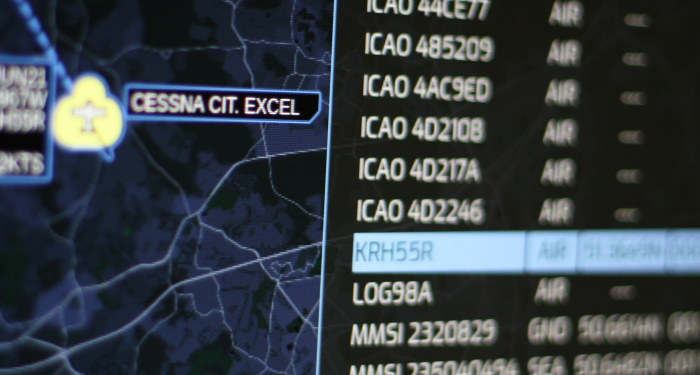 The Track Table within Plane/Sailing
The Track Table within Plane/Sailing
The server is written in Java, simply because it was the easiest language for me to get up and running with quickly, and hopefully should avoid the “dependency hell” of my previous back-end server project written in Ruby.
The frontend code is of course written in HTML and JavaScript. Luckily, I had already done most of the hard work in UMID1090, the predecessor to this project:
 UMID1090 Interface
UMID1090 Interface
For Plane/Sailing, I decided to drop some of the more complex options for configuring the software, and instead go for a full-screen map with only a few options hidden inside pop-out panels. I used the dark map background, blue highlights and Exo font from my Career Explorer to give it a more futuristic feel. It’s not just an unnecessary military interface, it’s an unnecessary Hollywood military interface.
Version 1 provided a more limited set of options and no track table:
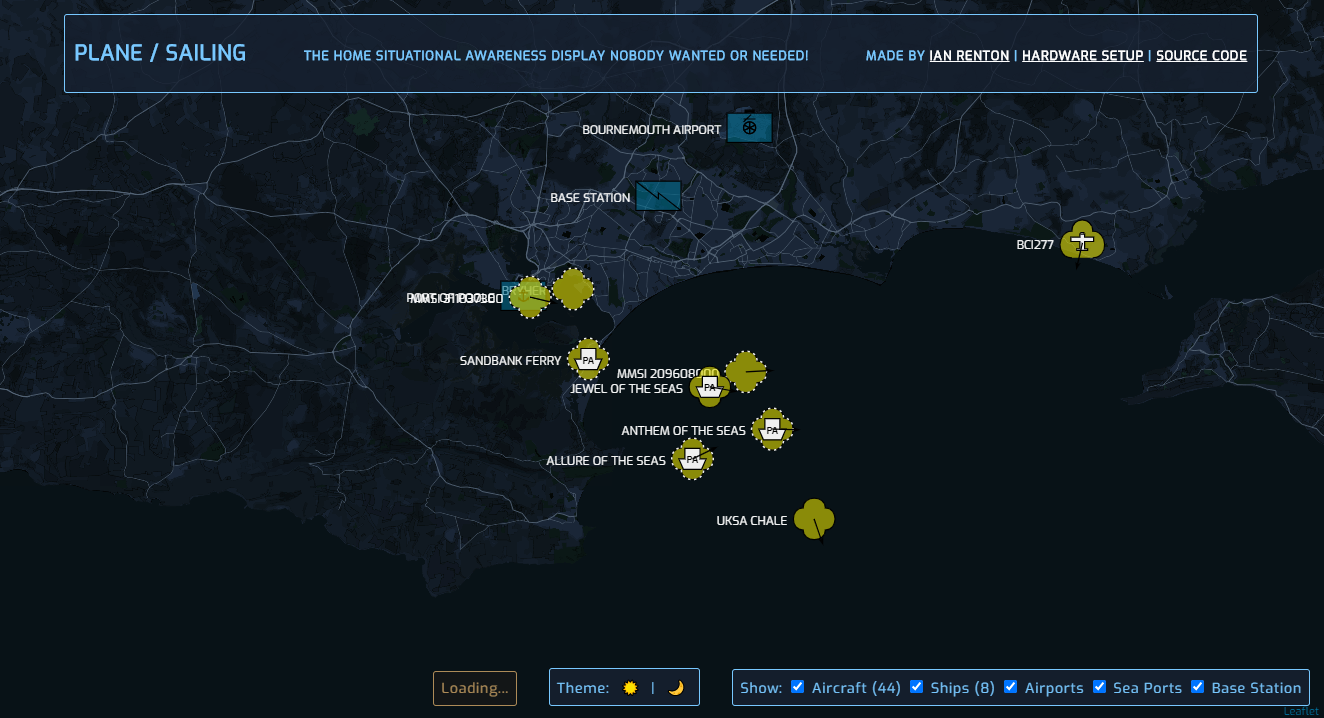 Plane/Sailing v1
Plane/Sailing v1
Version 2 re-added UMID1090’s track table, and brought across a few extra configuration options, along with the major rewrite in order to have it communicate with a dedicated back-end Plane/Sailing server rather than directly accessing data within Dump1090 and AIS Dispatcher.
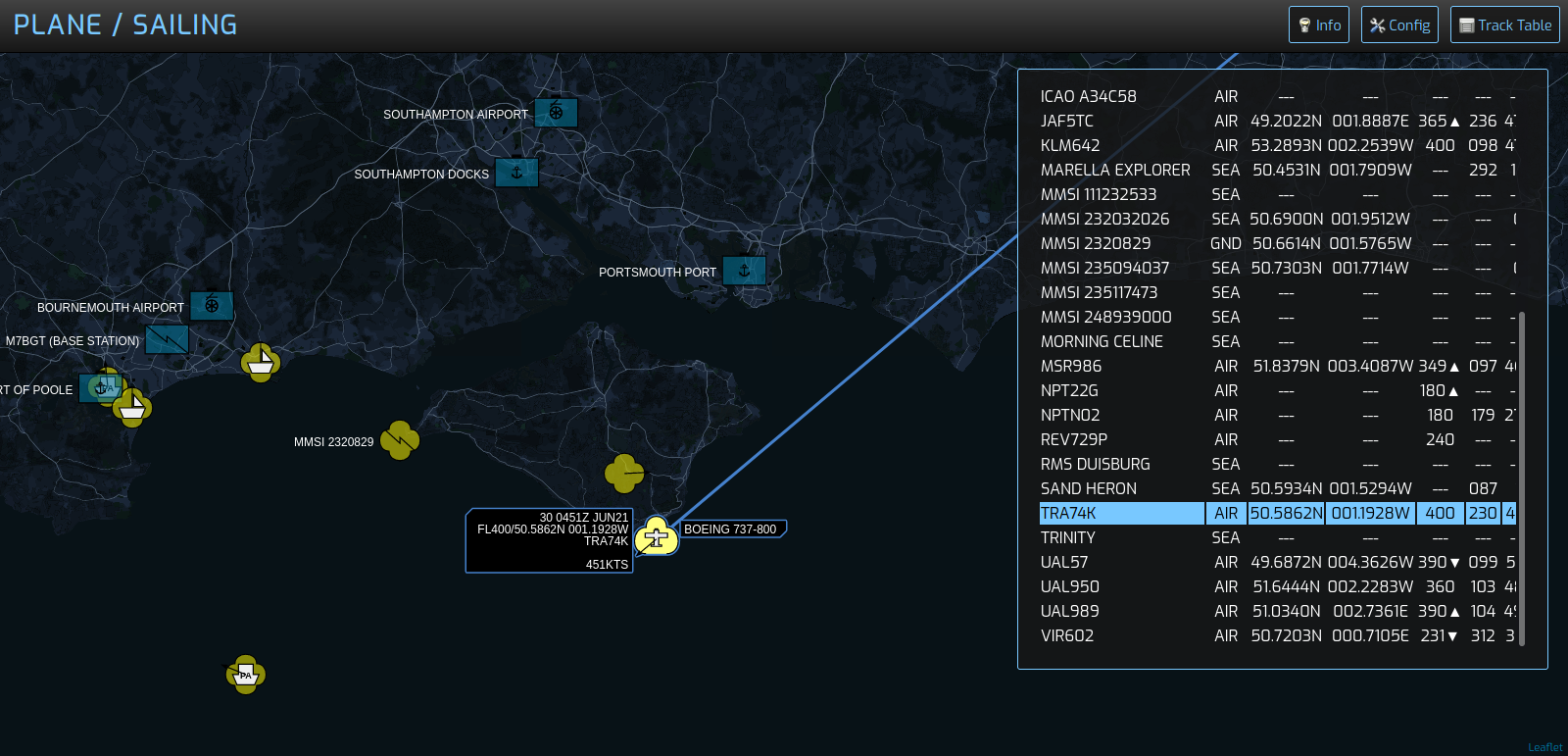 Plane/Sailing v2
Plane/Sailing v2
Subsequent minor versions have improved the UI and added more features, such as selectable background layers and overlays, classifying targets, and accessing server telemetry.
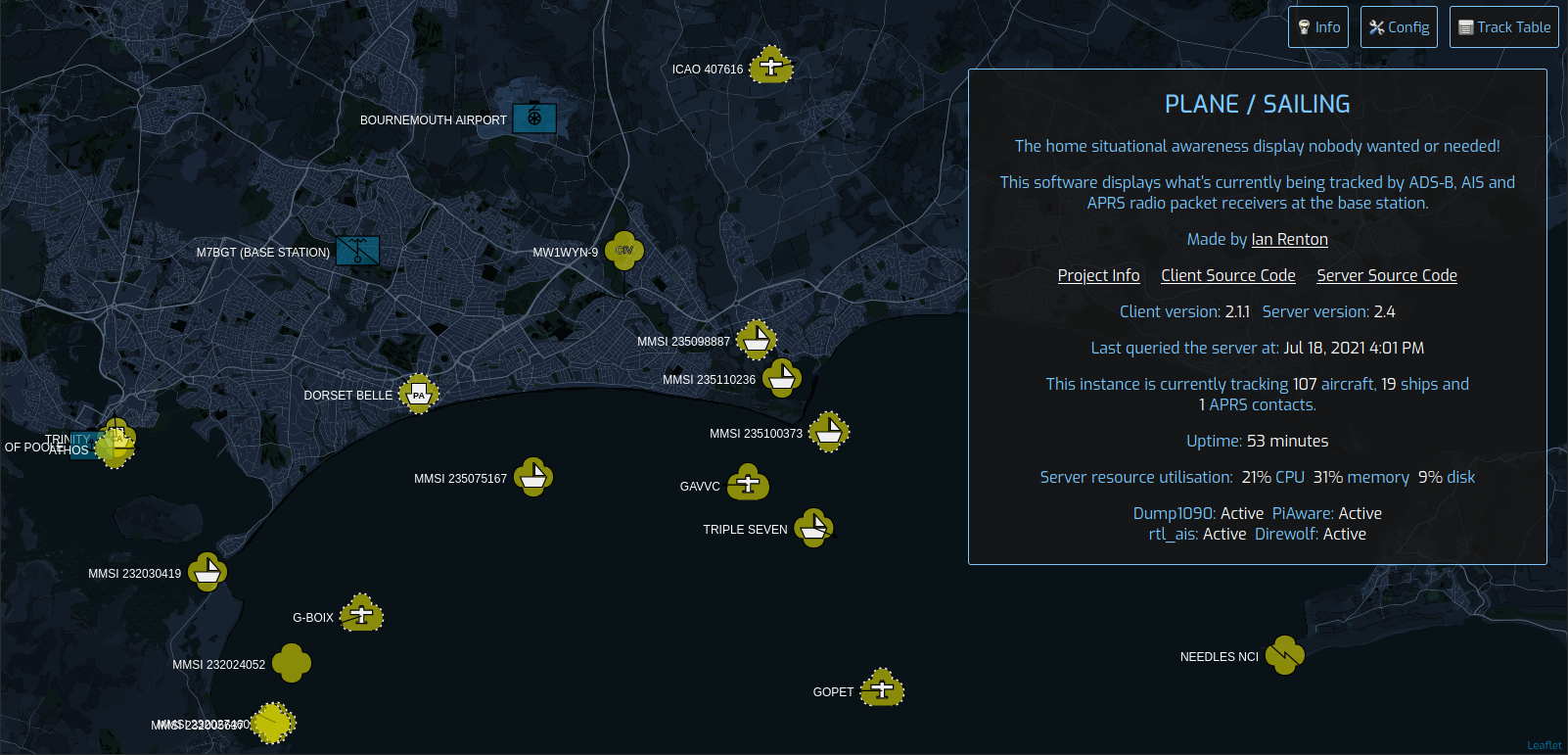 Plane/Sailing v2.1
Plane/Sailing v2.1
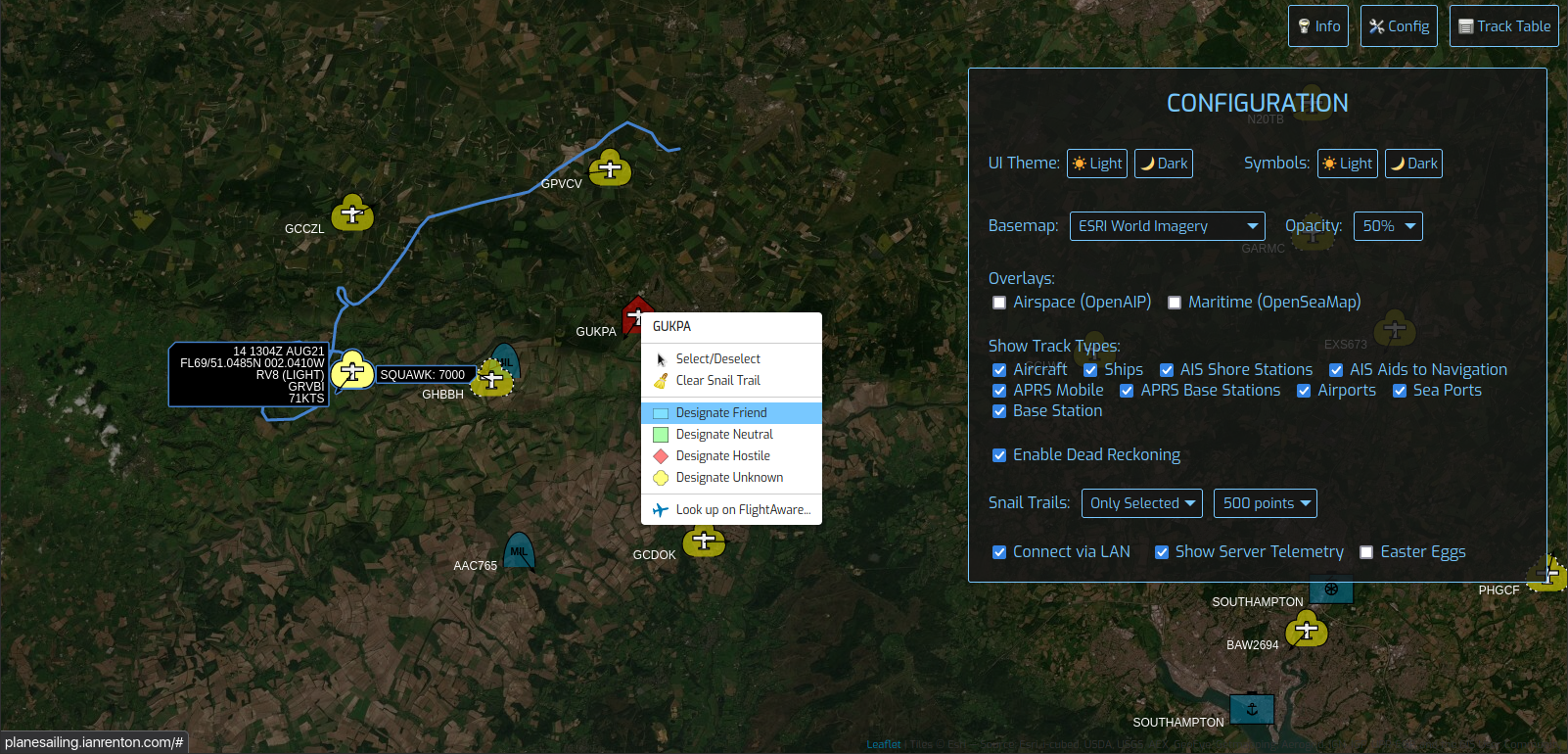 Plane/Sailing v2.3
Plane/Sailing v2.3
If you’re interested in replicating this build for yourself, there is a complete set of setup instructions in the Plane/Sailing README file. This covers not only getting the software up and running, but also ensuring it runs on startup on the Raspberry Pi, using Nginx to provide a Reverse Proxy setup, setting up HTTPS using Let’s Encrypt certificates, and allowing Dump1090 and AIS Dispatcher’s web interfaces to run on the same server. I wrote the README while going through the process myself, so hopefully it should work for you. If not, let me know and I’ll see if I can help you out!
Source code is available on Github and is in the public domain.
Comments